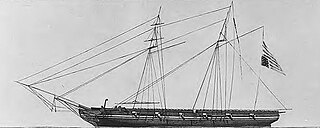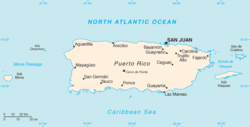
New Sweden was a colony of the Swedish Empire between 1638 and 1655 along the lower reaches of the Delaware River in what is now Delaware, Maryland, New Jersey, and Pennsylvania. Established during the Thirty Years' War when Sweden was a great power, New Sweden formed part of the Swedish efforts to colonize the Americas.

Peter Minuit was a Walloon merchant born in Wesel, in present-day northwestern Germany. He was the 3rd Director of the Dutch North American colony of New Netherland from 1626 until 1631, and 3rd Governor of New Netherland. He founded the Swedish colony of New Sweden on the Delaware Peninsula in 1638.

Fort Christina, also called Fort Altena, was the first Swedish settlement in North America and the principal settlement of the New Sweden colony. Built in 1638 and named after Christina, Queen of Sweden, it was located approximately 1 mi (1.6 km) east of the present-day downtown Wilmington, Delaware, at the confluence of the Brandywine River and the Christina River, approximately 2 mi (3 km) upstream from the mouth of the Christina on the Delaware River.

The Delaware Colony, officially known as the three Lower Counties on the Delaware, was a semiautonomous region of the proprietary Province of Pennsylvania and a de facto British colony in North America. Although not royally sanctioned, Delaware consisted of the three counties on the west bank of the Delaware River Bay.

Jean-David Nau, better known as François l'Olonnais, was a French pirate active in the Caribbean during the 1660s.

Swedes' Landing is the warehouse road found along the Minquas Kill in Wilmington, Delaware that is close to the Delaware River. This was the site where the initial Swedish landing took place and marks the spot where the New Sweden colony began. The first Swedish expedition to North America, under the command of Peter Minuit, embarked from the port of Gothenburg in late 1637. The members of the expedition, aboard the ships Fogel Grip and Kalmar Nyckel, sailed into Delaware Bay, which lay within the territory claimed by the Dutch West India Company and anchored at a rocky point on Swedes' Landing on March 29, 1638. They built a fort on the site which they named Fort Christina after Queen Christina of Sweden. Today Swedes Landing Road is a short stretch from 4th Street to 7th Street and ends at a long two-story mural depicting the area from the time before the Swedes came through the modern Wilmington waterfront. At the far end of the mural is the entrance to Fort Christina National Historical Site, a part of the First State National Historical Park System.

Swedish overseas colonies consisted of the overseas colonies controlled by Sweden. Sweden possessed overseas colonies from 1638 to 1663, in 1733 and from 1784 to 1878. Sweden possessed five colonies, four of which were short lived. The colonies spanned three continents: Africa, Asia and North America.

Gloria Dei Church, known locally as Old Swedes', is a historic church located in the Southwark neighborhood of Philadelphia, Pennsylvania, at 929 South Water Street, bounded by Christian Street on the north, South Christopher Columbus Boulevard on the east, and Washington Avenue on the south. It was built between 1698 and 1700, making it the oldest church in Pennsylvania and second oldest Swedish church in the United States after Holy Trinity Church in Wilmington, Delaware.
Måns Andersson, was a pioneer in the Swedish colony of New Sweden.
Reorus Torkillus (1608–1643) was priest of the Church of Sweden and the first Lutheran clergyman to settle in what would become the United States.
Måns Nilsson Kling or Mauno Kling was the second governor of the 17th century colony of New Sweden, which he administrated from Fort Christina, now Wilmington, Delaware, United States.
Peter Gunnarsson Rambo was a Swedish immigrant to New Sweden known as a farmer and a justice of the Governor's Council after the British took control of the area. He was the longest living of the original Swedish settlers and became known as the Father of New Sweden. Rambo's Rock along the Schuylkill River is named for his family.

The Swedish Colonial Society is America's oldest organization dedicated to the study and preservation of New Sweden history. In addition to collecting and publishing research on Swedes and Finns in America, the Society maintains parks, monuments, and memorials of historic sites. A unique aspect of the group is its connection to Sweden's royal family and the Swedish government.
Fogel Grip was a Swedish sailing ship originally built in the Netherlands in the early 17th century. She was used on the first Swedish expedition in 1638 together with Kalmar Nyckel to establish the colony of New Sweden.

The West Indies Anti-Piracy Operations were a series of military operations and engagements undertaken by the United States Navy against pirates in and around the Antilles. Between 1814 and 1825, the American West Indies Squadron hunted pirates on both sea and land, primarily around Cuba and Puerto Rico. After the capture of Roberto Cofresi in 1825, acts of piracy became rare, and the operation was considered a success, although limited occurrences went on until slightly after the start of the 20th century.

The Attack on Marstrand was a successful Dano-Norwegian siege of the Swedish town of Marstrand and Carlsten fortress which took place between July 10 and July 16, 1719 during the end of the Great Northern War.

The Delaware Tercentenary half dollar is a commemorative fifty-cent piece struck by the United States Bureau of the Mint to commemorate the 300th anniversary of the first successful European settlement in Delaware. The reverse features the Swedish ship Kalmar Nyckel, which brought early settlers to Delaware, and the obverse depicts Old Swedes Church, which has been described as being the oldest Protestant church in the United States still used as a place of worship. While the coins are dated "1936" on the obverse and the reverse also has the dual date of "1638" and "1938", the coins were actually struck in 1937.

Drake's Assault on Panama also known as the Defence of Panama was a military event that took place in January 1596 during the Anglo–Spanish War. An English expedition under the command of Francis Drake and Thomas Baskerville attacked the Spanish Main via Nombre de Dios in order to cross the isthmus of Panama. Ravaged with dysentery and other diseases the English were repelled and defeated. Drake would die of the former and the expedition was forced to retreat back to England all the while harassed by the Spanish.

The Standoff near St. Christopher was a confrontation between the Swedish ship Örnen and three Turkish ships near the island of St. Christopher in 1654. The Turkish ships failed to hijack the Swedish ship and retreated.

Rantzau's reconquest of Öland refers to a successful Danish invasion and reconquest of Öland from 30 May to 13 June 1612 during the Kalmar War, led by Gert von Rantzau.
















